Yellow butterflies, with their radiant wings evoking sunlight and joy, are among nature’s most enchanting pollinators, belonging to the order Lepidoptera and primarily found in the Pieridae, Nymphalidae, and Papilionidae families. These vibrant insects, native to regions spanning North America, Europe, Asia, and beyond, use their golden hues for mate attraction, camouflage, or warning predators of their unpalatability.
With wingspans ranging from 1 to 5 inches, yellow butterflies thrive in diverse habitats, from temperate meadows to tropical forests, feeding on nectar from flowers like milkweed or lantana, while their caterpillars rely on specific host plants such as clover or citrus. Their bright coloration, often a result of carotenoid pigments or structural light reflection, makes them a favorite among gardeners and nature enthusiasts.
Why Yellow Butterflies Are a Garden Treasure
Yellow butterflies captivate with their cheerful, sun-like wings, symbolizing hope and transformation across cultures. Their coloration, ranging from pale lemon to deep gold, serves multiple purposes: attracting mates, blending with flowers, or signaling toxicity to predators, as seen in species like the Clouded Sulphur. Found globally, they inhabit grasslands, woodlands, and urban gardens, requiring nectar-rich plants for adults and specific host plants for larvae. As pollinators, they support ecosystems by aiding plant reproduction, contributing to food security, and their presence indicates healthy habitats. However, habitat loss, pesticide use, and climate change threaten many species, making butterfly-friendly gardens crucial.
List of Yellow Butterflies
- Boomerang owl (Caligo oedipus)
- Citrus Swallowtail (Papilio demodocus)
- Illioneus giant owl (Caligo illioneus)
- Common Birdwing (Troides helena)
- Golden Birdwing (Troides aeacus)
- Anise swallowtail (Papilio zelicaon)
- Little Yellow (Eurema lisa)
- Orange Emigrant (Catopsilia scylla)
- Peacock Pansy (Junonia almana)
- Grecian Shoemaker (Catonephele numilia)
- Sleepy Orange (Eurema nicippe)
- Giant Swallowtail (Papilio cresphontes)
- Clouded Sulphur (Colias philodice)
- Thoas Swallowtail (Papilio thoas)
- Three-tailed Tiger Swallowtail (Papilio pilumnus)
- Apricot Sulfur (Phoebis argante)
- Cloudless Sulfur (Phoebis sennae)
- Yellow-angled Sulfur (Anteos maerula)
- Zebra longwing (Heliconius charithonia)
- Southern Dogface (Zerene cesonia)
- Edwards Fritillary (Speyeria edwardsii)
Citrus swallowtail
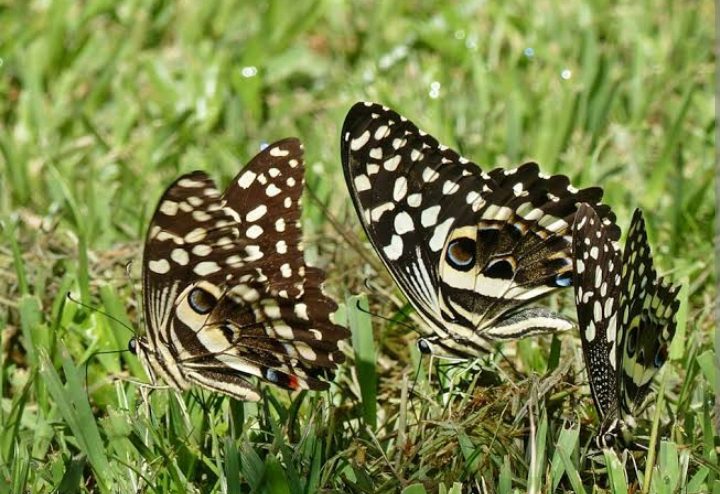
Papilio demodocus, the citrus swallowtail or Christmas butterfly, is a swallowtail butterfly commonly seen in the garden. Adult butterflies have black and yellow markings with red and blue eyespots. Female butterflies tend to be larger than males.
The adult butterfly feeds on nectar from many different flowers with long tubes including Cordia, bougainvillea, cardinal flower, hibiscus, lantana and wild morning glory.
Illioneus giant owl

This blue beauty is in the genus known as the owl butterflies (Caligo). They’re called owl butterflies because the markings on the undersides of their wings have large black eyespots that resemble the eyes of an owl.
In this large owl butterfly the dorsal sides of the wings vary from light brilliant blue to purplish with dark brown edges, while the undersides have a highly cryptic dull brown color, with huge yellow-rimmed eyespots resembling to the eyes of an owl.
Common Birdwing
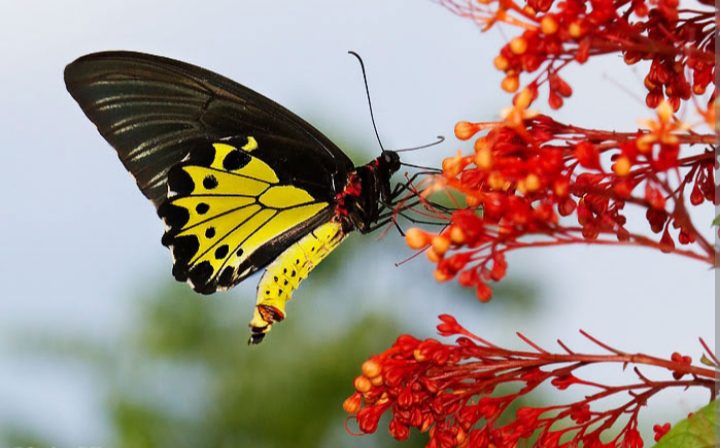
Troides helena, the common birdwing, is one of the most butterfly around. The forewings of both sexes are black with veins typically edged with greyish streaks, more conspicuously so in the female. The hindwings are rick golden yellow with black veins and black borders. In addition, the female has a complete series of rather large submarginal black spots, while the male has just one or a few submarginal spots.
Golden Birdwing

Golden birdwing is a beautiful butterfly generally loved by children and butterfly collectors. In the males the forewings are black, with veins bordered by whitish colour, while the hindwings are bright yellow. The underside of the wings is quite similar to the upside. The females are larger than the males and have dark-brown or black wings. Head, thorax and abdomen of this butterfly are mainly black, with small red patches on the thorax and a yellow underside of the abdomen.
Anise swallowtail
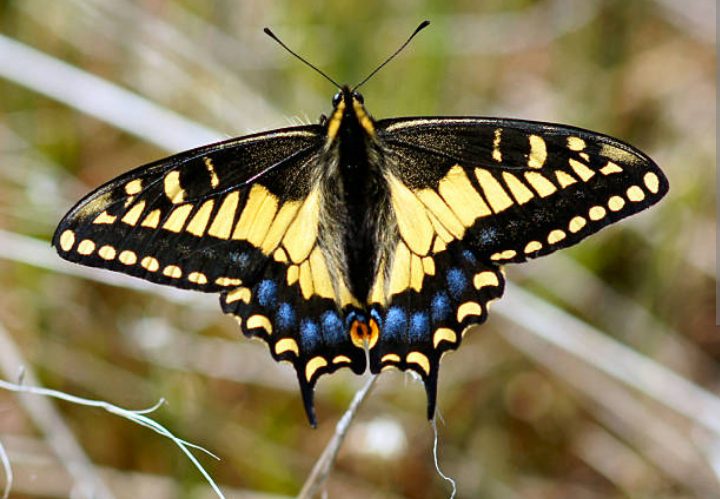
Anise swallowtail, is a common swallowtail butterfly. Both the upper and lower sides of its wings are black, but the upper wing has a broad yellow stripe across it, giving the butterfly an overall yellow appearance. There are striking blue spots on the rear edge of the rear wing, and the characteristic tails of the swallowtails. There are yellowish-orange to red eyespots near the tails of each wing, each containing a black pupil.
Little yellow
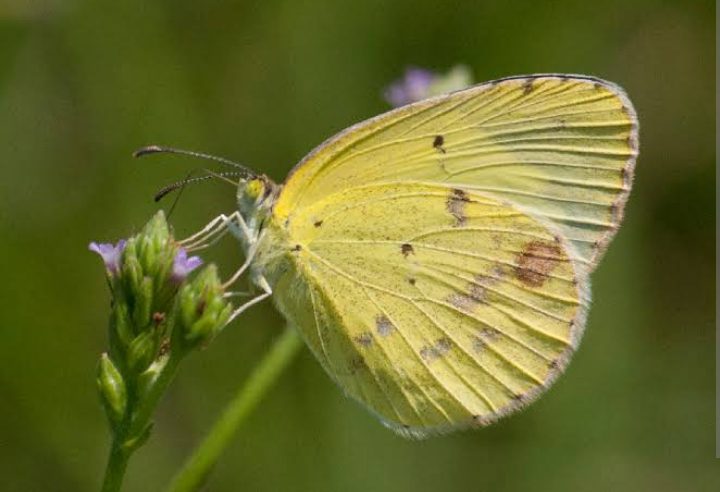
Eurema lisa, commonly known as the little yellow, little sulphur or little sulfur is a bright flavescent butterfly found in many places around the world. When the wings are open, the dorsal side of the two pairs of wings display a wide dark margin atop a bright yellow base with the borders in the outer corners of the primary wings being thicker. When the wings are closed, the ventral side of the two hind wings show a pair of basal black spots and tiny light gray blotches.
Orange Emigrant
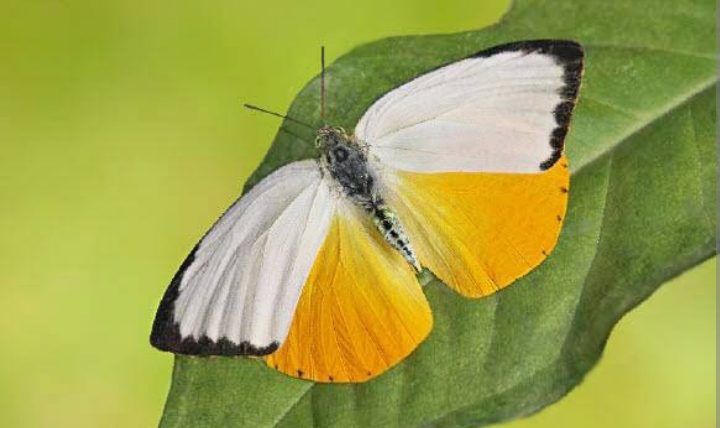
Catopsilia scylla, the orange migrant or orange emigrant is a medium sized butterfly approximately 2-3 inches long. On the upperside, the forewing is white with a black border and the hindwing is deep chrome-yellow.
In addition, the female has a black post-discal fascia on the forewing and a series of black marginal spots on the hindwing. On the underside, the wings are yellow with intermittent, faint brown post-discal spots. A brown ring marking can be found at the cell-end on both wings.
Peacock Pansy
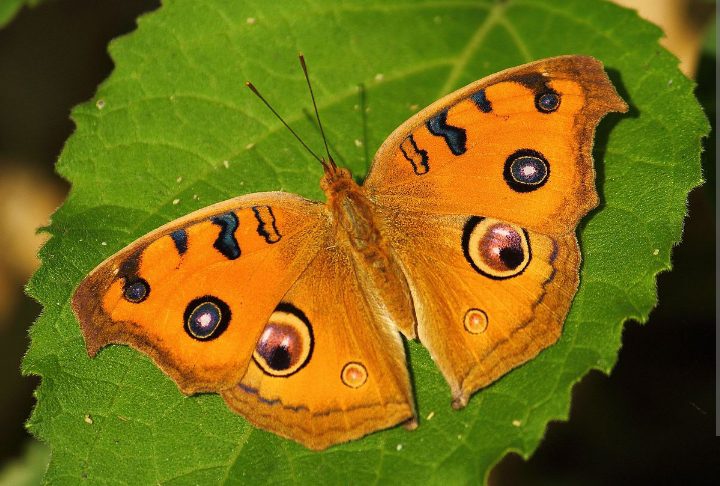
The wings are rich yellowish brown with darker brown edges at both termen and costal margins. On each of the forewings, there are four distinct costal bars, the outermost three of which are filled with darker shadings. There is a prominent “peacock” eye-spot in space 2 near the tornal area, and a lesser one in space 5.
On each hindwing, a much larger and more prominent eye-spot is featured in spaces 5-6 near the apex. The termens of both fore- and hindwings are marked by two series of marginal striae. Underneath, the wings are duller and the costal bars are filled with paler shadings instead.
Grecian Shoemaker
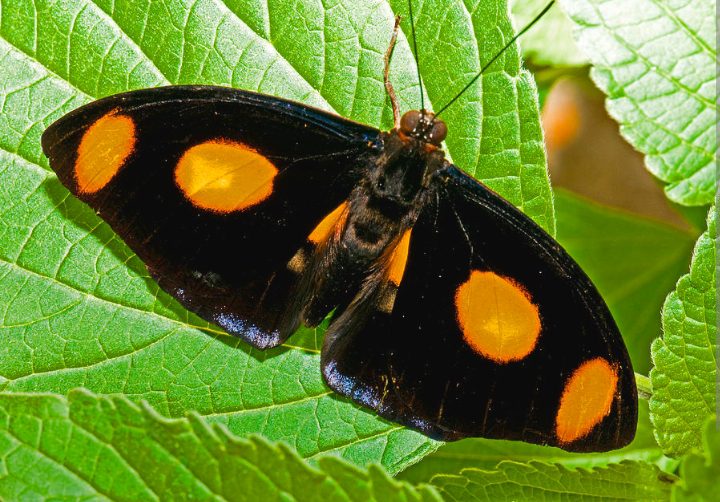
This butterfly usually flies along the ground and close to the ripe fruits and flowers. It can live averagelya month. Adults feed on rotten fruits. There is sexual dimorphism in the adults, with the males being black with six orange dots on the dorsal surface of the wings, whereas females are black with a light yellow band across the centre of the forewings.
Sleepy orange
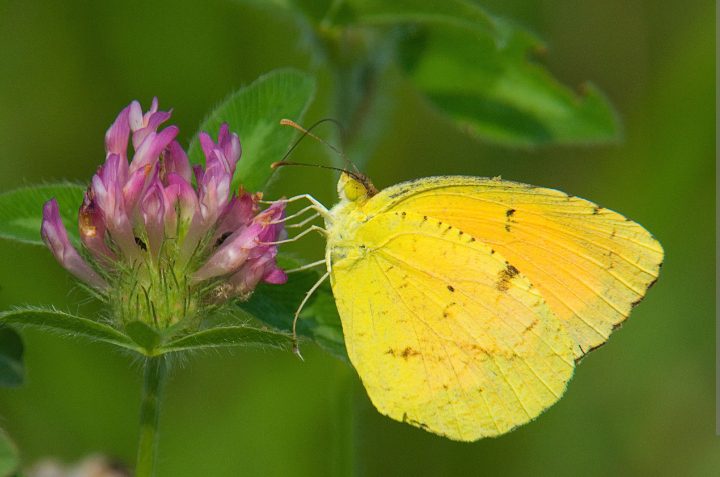
The sleepy orange is a bright orange butterfly with the upperside of the wings having wide black borders. The forewing costal margin has a small, narrow black spot. Some people think that the sleepy orange got its name from the black spot that looks like a closed eye; others say that the sleepy orange is a misnomer because, when disturbed, the butterfly has a very rapid flight.
The underside of the wings varies seasonally: summer forms are bright yellow with brick-red markings, while winter forms are browner and more heavily marked.
Giant swallowtail’s
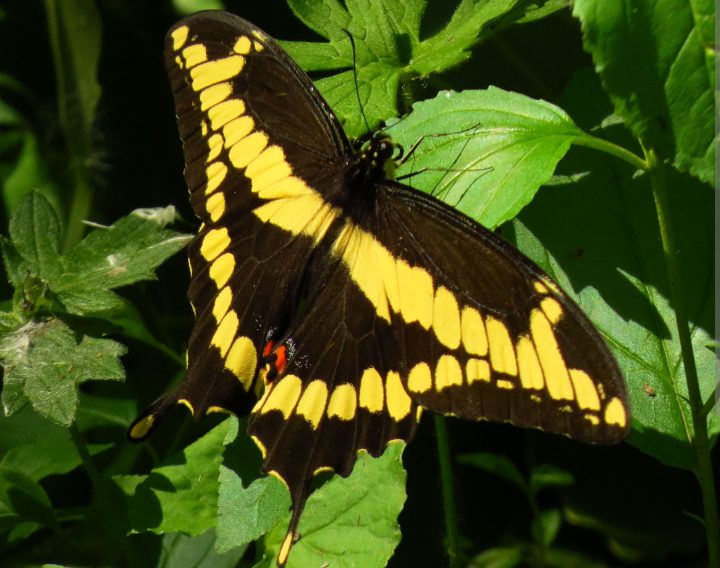
One of the giant swallowtail’s most notable features is its size. Females have an average wingspan of 5-7 inches while males’ average about 5-7.5 inches.
The wings are black with a horizontal yellow line across the forewings, and a diagonal yellow line across the hindwing. The underside of the wings is yellow with accents of black. A small patch of red on the ventral wing (within the small blue band) allows for distinction from the similar-looking Schaus’ swallowtail.
Clouded sulphur
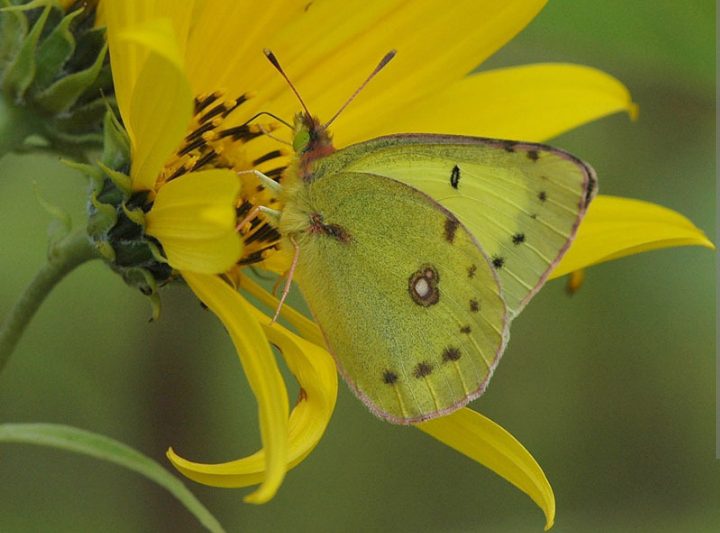
The common sulphur also referred to as clouded sulphur is a pretty yellow butterfly that flits around from flower to flower. Both genders typically have pale yellow wings above with no traces of orange, unlike its close cousin the orange sulphur which may also be yellowish. Males have clean borders, while females have yellow dots within this region. Females sometimes exhibit a white form known as alba.
The underside of the male’s wings is yellow while the female’s is yellow or greenish white, and both have a doubled hindwing spot trimmed in brownish red. The hindwings show a series of four small red spots along the outer third portion.
Thoas swallowtail
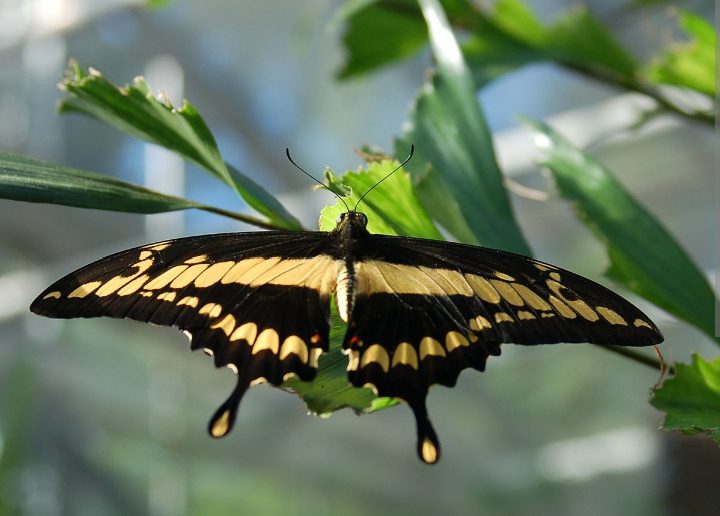
The king swallowtail also referred to as Thoas swallowtail is easily confused with the giant swallowtail, which it closely resembles in both larval and adult stages. The attractive underside is pale yellow with pale blue and dark red markings. Both male and female have similar colours and patterns.
Three-tailed Tiger Swallowtail
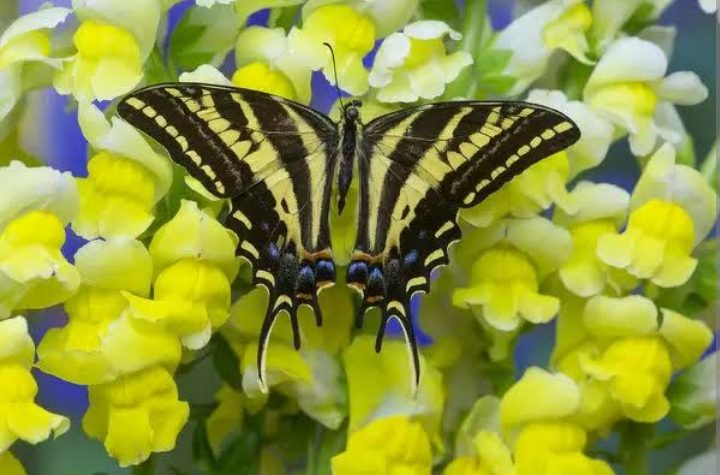
Papilio pilumnus, the three-tailed tiger swallowtail is a species of butterflies in the family swallowtail butterflies. The uppersides of both the forewings and hindwings are yellow with a black basal bands. The wings are bordered by a black band with a submarginal yellow stripe. The hindwing has three tails and two blue spots above the shortest tail.
Apricot sulphur
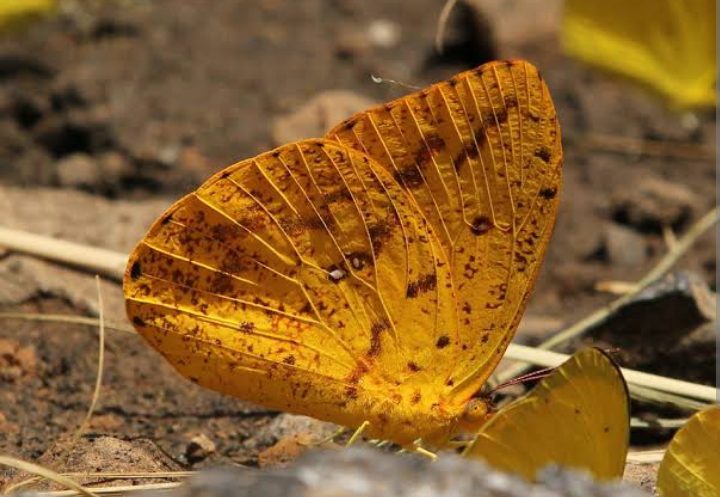
Phoebis argante, the apricot sulphur or Argante giant sulphur has a wingspan of about 2-2.5 inches. The uppersides of the male’s wings are bright orange with a thin black or dark brown border on forewings. The hindwings are slightly paler and have two small whitish spots in the middle. The basic colour of the females vary from white to yellow, with dark borders.
Yellow-angled Sulfur
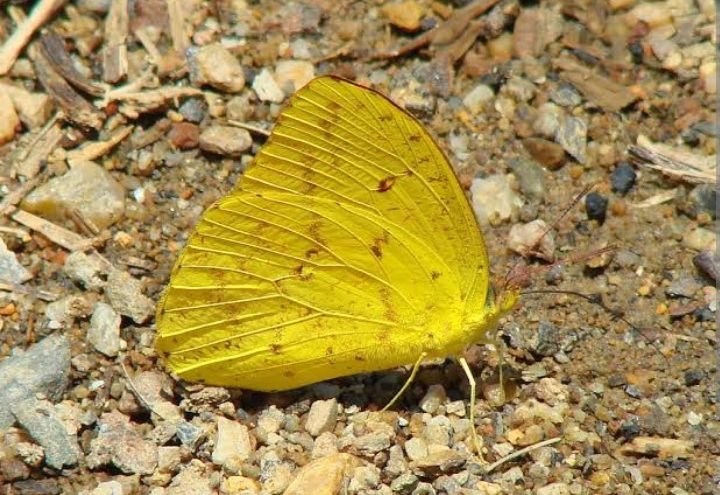
The upperside of the males is bright yellow, while females are paler. Both sexes have a black spot in the forewing cell. Adults feed on the nectar from red and purple flowers, including Hibiscus and Bougainvilla species. Females have a narrow black border on the wings and a dark spot in the middle of the front wing. Males are seasonally dimorphic with winter forms being larger and with darker markings ventrally.
Zebra longwing
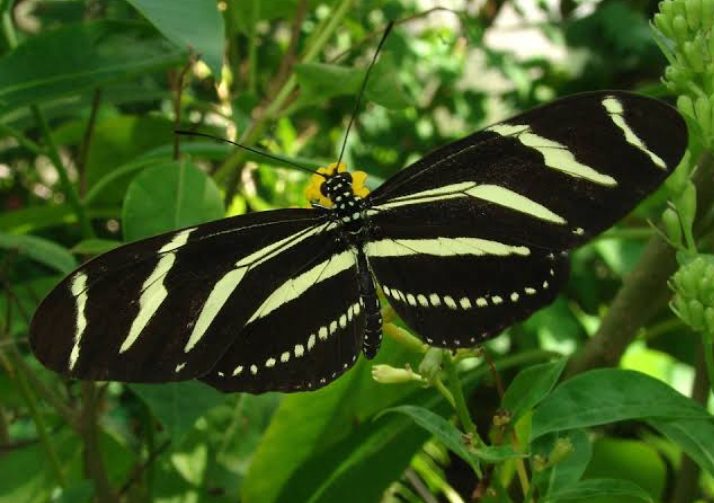
Adult butterflies are monomorphic of medium size with long wings. On the dorsal side, the wings are black with narrow white and yellow stripes, with a similar pattern on the ventral side, but paler and with red spots.
Zebra longwing adults roost communally at night in groups of up to 60 adults for safety from predators. The adult butterflies are unusual in feeding on pollen as well as on nectar; the pollen enables them to synthesize cyanogenic glycosides that make their bodies toxic to potential predators.
Southern dogface
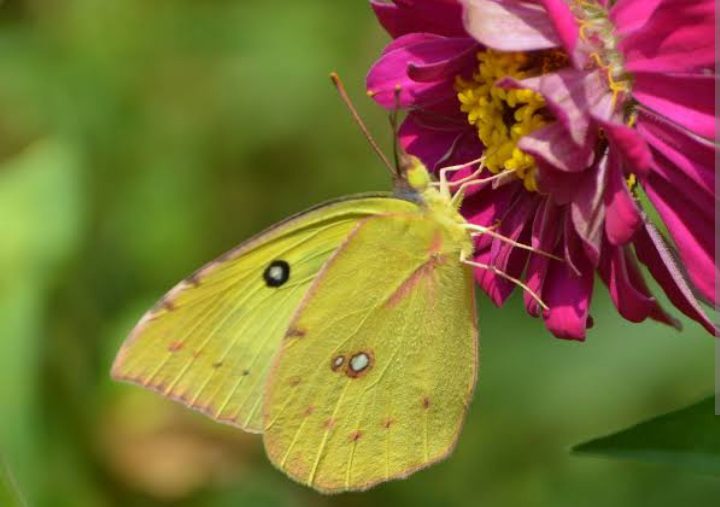
The upper side of the pointed forewings have a dogface pattern. The wings are mainly yellow with black borders. The underside of the wings is mostly yellow with a black eyespot on the forewing and two white spots on the hindwing.
Edwards Fritillary
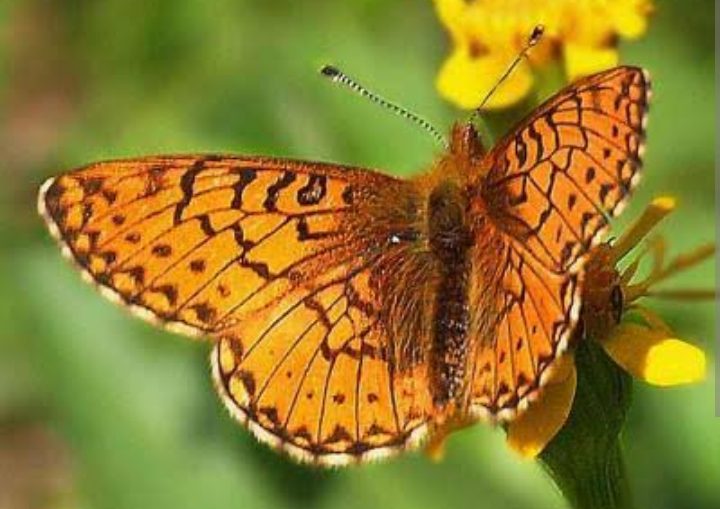
This butterfly is mostly orange coloured with distinct dark-brown bars on the topside. The wing margins are dark with lighter circles then darker crescents. Silvery spots predominate on the yellowish underside.
Attracting Yellow Butterflies: Essential Tips
To attract yellow butterflies, plant host and nectar plants suited to your USDA zone (3–11). Use Cassia, Trifolium, Fraxinus, or Liriodendron for larvae, spacing 12–30 feet apart based on plant size, and Lantana, Zinnia, Buddleia, or Asclepias for nectar, spacing 12–18 inches apart. Ensure full sun (6+ hours daily) and well-drained soil (pH 6–7). Avoid synthetic pesticides, opting for neem oil or introducing ladybugs to manage pests like aphids. Provide shallow water sources with pebbles for mineral sipping and flat rocks for basking. In cooler zones (3–8), use row covers or greenhouses to extend the season; in zones 9–11, maintain humidity for tropical species like Orange-Barred Sulphur. Deadhead nectar plants regularly to ensure continuous blooms, and avoid overwatering to prevent root rot. Check local regulations for planting exotic host plants to avoid invasiveness, and source from native nurseries to support ecological balance.
Design Ideas for Butterfly Gardens
Yellow butterflies bring warmth and vibrancy to garden designs. Plant Cloudless Sulphur or Orange-Barred Sulphur in tropical beds with Cassia and Lantana, paired with low-growing ferns for texture and shade. Create a temperate meadow with Clouded Sulphur using Trifolium and Echinacea, accented by Coreopsis for a golden palette. Design a woodland edge with Eastern Tiger Swallowtail and Liriodendron, underplanted with Buddleia for nectar and visual contrast.
Use Two-Tailed Swallowtail in arid gardens with Fraxinus and Asclepias, complemented by drought-tolerant grasses like Bouteloua. For small spaces, grow Zinnia and Pentas in containers for Cloudless Sulphur, paired with dwarf shrubs. These designs attract butterflies, support pollinators like bees, and enhance biodiversity, but avoid planting in heavy shade or near invasive species to ensure healthy ecosystems.
Ecological and Cultural Significance
Yellow butterflies are vital pollinators, aiding the reproduction of crops like fruits, vegetables, and ornamentals, and their presence signals robust ecosystems. With approximately 17,500 butterfly species globally (750 in North America), yellow species face threats from habitat loss, pesticide use, and climate change, particularly migratory ones like Cloudless Sulphur. Culturally, yellow butterflies symbolize joy, optimism, and spiritual renewal in traditions from Native American lore to Asian folklore, often featured in art, literature, and festivals like Mexico’s monarch celebrations.
Their bright wings, derived from pigments or structural coloration, inspire scientific research and conservation efforts, such as those by Butterfly Conservation and the Xerces Society. However, their bright colors make them targets for predators, and overhandling can damage delicate wings, so observe with binoculars or cameras for minimal disturbance.
Challenges and Conservation
Yellow butterflies face significant challenges, including deforestation, urban sprawl, and pesticide exposure, which reduce populations of species like Orange-Barred Sulphur in tropical regions. Climate change disrupts migration patterns, as seen with Cloudless Sulphur, while parasites and predators threaten larvae. To mitigate these, adopt organic gardening practices, avoiding chemical pesticides and using neem oil or companion planting with marigolds to deter pests.
Support conservation initiatives like the Monarch Watch program or local butterfly sanctuaries, such as Florida’s Butterfly World. Source host and nectar plants from reputable suppliers like Prairie Moon Nursery, Native Plant Finder, or Annie’s Annuals to ensure disease-free, native stock. Avoid planting in frost-prone areas without season extenders like cloches, and participate in citizen science projects via platforms like iNaturalist to track butterfly populations. Conservation efforts, such as habitat restoration in the Great Plains for Clouded Sulphur, offer hope for sustaining these sunny pollinators.